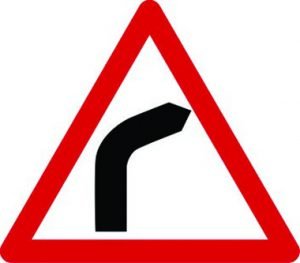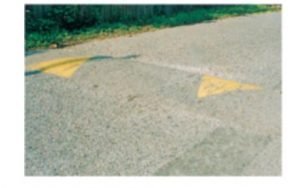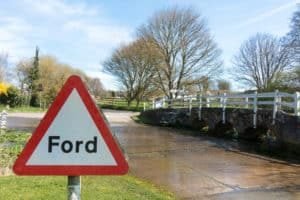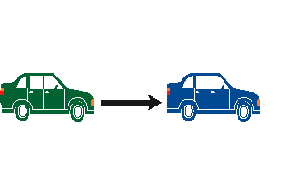Practice Test – 10
Quiz Summary
0 of 44 Questions completed
Questions:
Information
You have already completed the quiz before. Hence you can not start it again.
Quiz is loading…
You must sign in or sign up to start the quiz.
You must first complete the following:
Results
Results
0 of 44 Questions answered correctly
Your time:
Time has elapsed
You have reached 0 of 0 point(s), (0)
Earned Point(s): 0 of 0, (0)
0 Essay(s) Pending (Possible Point(s): 0)
Categories
- Not categorized 0%
- 1
- 2
- 3
- 4
- 5
- 6
- 7
- 8
- 9
- 10
- 11
- 12
- 13
- 14
- 15
- 16
- 17
- 18
- 19
- 20
- 21
- 22
- 23
- 24
- 25
- 26
- 27
- 28
- 29
- 30
- 31
- 32
- 33
- 34
- 35
- 36
- 37
- 38
- 39
- 40
- 41
- 42
- 43
- 44
- Current
- Review
- Answered
- Correct
- Incorrect
-
Question 1 of 44
1. Question
By how much can stopping distances increase in icy conditions?
CorrectIncorrect -
Question 2 of 44
2. Question
In windy conditions, which activity requires extra care?
CorrectIncorrect -
Question 3 of 44
3. Question
When approaching a right-hand bend, you should keep well to the left. Why is this?
 CorrectIncorrect
CorrectIncorrect -
Question 4 of 44
4. Question
You’ve just gone through deep water. What should you do to make sure your brakes are working properly?
CorrectIncorrect -
Question 5 of 44
5. Question
In very hot weather, the road surface can become soft. What will this affect?
CorrectIncorrect -
Question 6 of 44
6. Question
Where are you most likely to be affected by side winds?
CorrectIncorrect -
Question 7 of 44
7. Question
In good conditions, what’s the typical stopping distance at 70 mph?
CorrectIncorrect -
Question 8 of 44
8. Question
What’s the shortest overall stopping distance on a dry road at 60 mph?
CorrectIncorrect -
Question 9 of 44
9. Question
Your following a vehicle at a safe distance on a wet road, another driver overtakes you and pulls into a gap you’ve left. What should you do?
CorrectIncorrect -
Question 10 of 44
10. Question
Your travelling at 50 mph on a good, dry road, what’s your overall stopping distance?
CorrectIncorrect -
Question 11 of 44
11. Question
You’re on a good, dry road surface. Your brakes and tyres are good. what’s the typical overall stopping distance at 40 mph?
CorrectIncorrect -
Question 12 of 44
12. Question
What should you do when overtaking a motorcyclist in strong winds?
CorrectIncorrect -
Question 13 of 44
13. Question
Overall stopping distance is made up of thinking distance and braking distance. You’re on a good, dry road surface, with good tyres and brakes. what’s the typical braking distance from 50 mph?
CorrectIncorrect -
Question 14 of 44
14. Question
In heavy motorway traffic, the vehicle behind you is following too closely. How can you lower the risk of collision?
 CorrectIncorrect
CorrectIncorrect -
Question 15 of 44
15. Question
You are following other vehicles in fog. You have your lights on. What else can you do to reduce the chances of being in a collision?
CorrectIncorrect -
Question 16 of 44
16. Question
Your using contra flow system. What should you do?
CorrectIncorrect -
Question 17 of 44
17. Question
You are driving on icy road. How can you avoid wheel spin?
CorrectIncorrect -
Question 18 of 44
18. Question
What’s the main cause of skidding?
CorrectIncorrect -
Question 19 of 44
19. Question
Your driving in freezing conditions. What should you do when approaching a sharp bend?
CorrectIncorrect -
Question 20 of 44
20. Question
You’re turning left on a slippery road. What should you do if the back of your vehicle slides to the right?
CorrectIncorrect -
Question 21 of 44
21. Question
What should you clear of ice and snow before starting a journey in freezing weather?
CorrectIncorrect -
Question 22 of 44
22. Question
What will help when you are trying to move off snow?
CorrectIncorrect -
Question 23 of 44
23. Question
What should you do when driving in snowy conditions?
CorrectIncorrect -
Question 24 of 44
24. Question
What’s the main benefit of driving a four wheel-drive vehicle?
CorrectIncorrect -
Question 25 of 44
25. Question
Your about to go down a steep hill. What should you do to control the speed of your vehicle?
CorrectIncorrect -
Question 26 of 44
26. Question
What should you do when parking your car facing downhill?
CorrectIncorrect -
Question 27 of 44
27. Question
You are driving in a built-up area that has traffic calming measures. What should you do when you approach this hump?
 CorrectIncorrect
CorrectIncorrect -
Question 28 of 44
28. Question
Anti-lock brakes reduce the chance of skidding. When is this particularly important?
CorrectIncorrect -
Question 29 of 44
29. Question
On what type of road surface may anti-lock brakes not work effectively?
CorrectIncorrect -
Question 30 of 44
30. Question
When are anti-lock brakes of most use to you?
CorrectIncorrect -
Question 31 of 44
31. Question
What does drive a vehicle with anti-lock brakes allow you to do?
CorrectIncorrect -
Question 32 of 44
32. Question
You are driving a vehicle that has anti-lock brakes. How should you apply the footbrakes when you need to stop in an emergency?
CorrectIncorrect -
Question 33 of 44
33. Question
In which conditions are your anti-lock brakes most unlikely to prevent skidding?
CorrectIncorrect -
Question 34 of 44
34. Question
You are driving along country road. You see this sign. What should you do after dealing safely with the hazard?
 CorrectIncorrect
CorrectIncorrect -
Question 35 of 44
35. Question
What would suggest you’re driving on ice?
CorrectIncorrect -
Question 36 of 44
36. Question
Your driving along a wet road. How can you tell if your vehicles tyres are losing their grip on the surface?
CorrectIncorrect -
Question 37 of 44
37. Question
In which conditions will your overall stopping distance increase?
CorrectIncorrect -
Question 38 of 44
38. Question
Your driving on an open road in dry weather. What should the stopping distance be between you and the vehicle in front?
 CorrectIncorrect
CorrectIncorrect -
Question 39 of 44
39. Question
How can you use your vehicles engine as a brake?
CorrectIncorrect -
Question 40 of 44
40. Question
Where are the anti-lock brake (ABS) most effective?
CorrectIncorrect -
Question 41 of 44
41. Question
When will anti-lock brakes take affect?
CorrectIncorrect -
Question 42 of 44
42. Question
You are driving on a wet motorway with surface spray. What lights should you use?
CorrectIncorrect -
Question 43 of 44
43. Question
What can result when u travel for long distances in neutral (known as coasting)?
CorrectIncorrect -
Question 44 of 44
44. Question
What should you do when driving in fog?
CorrectIncorrect
